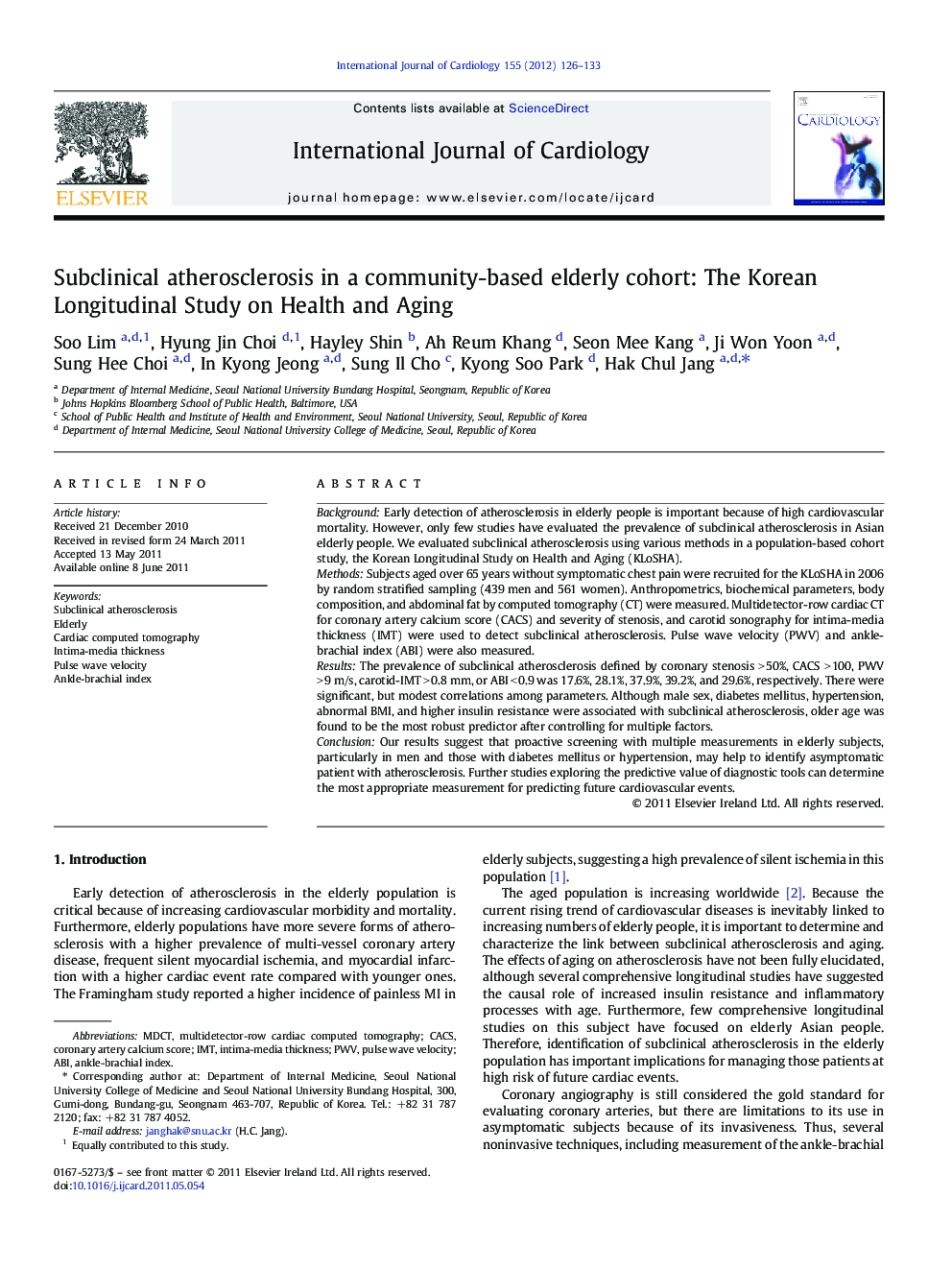| Article ID | Journal | Published Year | Pages | File Type |
|---|---|---|---|---|
| 2930150 | International Journal of Cardiology | 2012 | 8 Pages |
BackgroundEarly detection of atherosclerosis in elderly people is important because of high cardiovascular mortality. However, only few studies have evaluated the prevalence of subclinical atherosclerosis in Asian elderly people. We evaluated subclinical atherosclerosis using various methods in a population-based cohort study, the Korean Longitudinal Study on Health and Aging (KLoSHA).MethodsSubjects aged over 65 years without symptomatic chest pain were recruited for the KLoSHA in 2006 by random stratified sampling (439 men and 561 women). Anthropometrics, biochemical parameters, body composition, and abdominal fat by computed tomography (CT) were measured. Multidetector-row cardiac CT for coronary artery calcium score (CACS) and severity of stenosis, and carotid sonography for intima-media thickness (IMT) were used to detect subclinical atherosclerosis. Pulse wave velocity (PWV) and ankle-brachial index (ABI) were also measured.ResultsThe prevalence of subclinical atherosclerosis defined by coronary stenosis > 50%, CACS > 100, PWV > 9 m/s, carotid-IMT > 0.8 mm, or ABI < 0.9 was 17.6%, 28.1%, 37.9%, 39.2%, and 29.6%, respectively. There were significant, but modest correlations among parameters. Although male sex, diabetes mellitus, hypertension, abnormal BMI, and higher insulin resistance were associated with subclinical atherosclerosis, older age was found to be the most robust predictor after controlling for multiple factors.ConclusionOur results suggest that proactive screening with multiple measurements in elderly subjects, particularly in men and those with diabetes mellitus or hypertension, may help to identify asymptomatic patient with atherosclerosis. Further studies exploring the predictive value of diagnostic tools can determine the most appropriate measurement for predicting future cardiovascular events.
